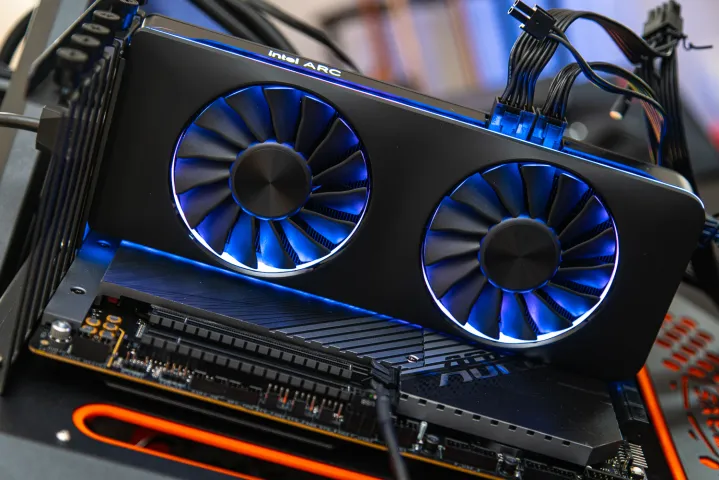Intel unveiled its next-generation mobile chipset, Lunar Lake, at a tech event in Taiwan just before Computex 2024. This successor to Meteor Lake boasts a new core architecture, better security features, and improved power efficiency – all exciting improvements. But the real star of the show might be the Xe2 graphics processing unit (GPU).
While the focus of the new platform is on boosting AI performance and capabilities, the advancements in the GPU are pretty impressive. Even more interesting is a tidbit that slipped during a presentation on the Xe2 GPU. An Intel representative revealed that the company is already working on the “next one for Panther Lake generation.” Looks like Team Blue is gearing up for their third generation of graphics, expected to launch with Panther Lake sometime in 2025.

While details on what kind of improvements and performance gains Intel has in store for us are still under wraps, we can expect some natural advancements over Xe2. The jump from Meteor Lake to Lunar Lake is impressive, offering up to 1.5 times better graphics performance at the same power level. Considering Xe2 features eight Xe cores for mobile devices, it wouldn’t be surprising to see Intel bump that number up to 12 or even 16 cores next year for Panther Lake.
This isn’t the first time we’ve heard whispers about the third-generation Xe3 GPU. Last year, a leak surfaced on a social media platform mentioning a third-generation Arc GPU with the codename “Celestial.” The expectation is that Panther Lake will integrate the Xe3-LPG architecture, which is most likely a scaled-down version of the more powerful Celestial Xe3-HPG. Whether Panther Lake will be aimed at desktops or mobile devices remains unclear for now, but one thing’s for sure – Xe3 is definitely on its way.
It’s difficult to say exactly how far along development is on Celestial at this point. Earlier this year, Intel confirmed that the hardware for their Xe2 desktop graphics cards (codenamed Battlemage) is nearly finalized. The current focus is on software refinement as they prepare the architecture for Lunar Lake. Following Intel’s typical release cycle, we should be getting much more detailed information about Xe3 around this time next year.

In a nutshell, Intel just launched Lunar Lake with Xe2 graphics, but they’ve already teased the next generation, Xe3, for their upcoming Panther Lake chips. While specifics are scarce, the future looks bright for Intel graphics with potential performance improvements and a possible increase in cores. We’ll have to wait until next year for a clearer picture of Xe3, but based on these early hints, the wait seems promising.
While the focus of the new platform is on AI performance and capabilities, the advancements in the GPU are pretty impressive. Lunar Lake boasts the Xe2 GPU, and during a presentation, an Intel representative accidentally revealed that the company is already working on the “next one for Panther Lake generation.” This surprise announcement sent ripples through the tech world – Team Blue is gearing up for their third generation of graphics, expected to launch with Panther Lake sometime in 2025.

What kind of improvements and performance gains can we expect with Xe3? Details are still under wraps, but we can make some educated guesses based on the jump from Meteor Lake to Lunar Lake. Lunar Lake offers up to 1.5 times better graphics performance at the same power level compared to its predecessor. Considering Xe2 features eight Xe cores for mobile devices, it wouldn’t be surprising to see Intel bump that number up to 12 or even 16 cores next year for Panther Lake. This would be a significant leap in terms of raw graphical power for mobile devices, potentially bringing them closer to the performance of desktops.
If you like the article please follow on THE UBJ.

